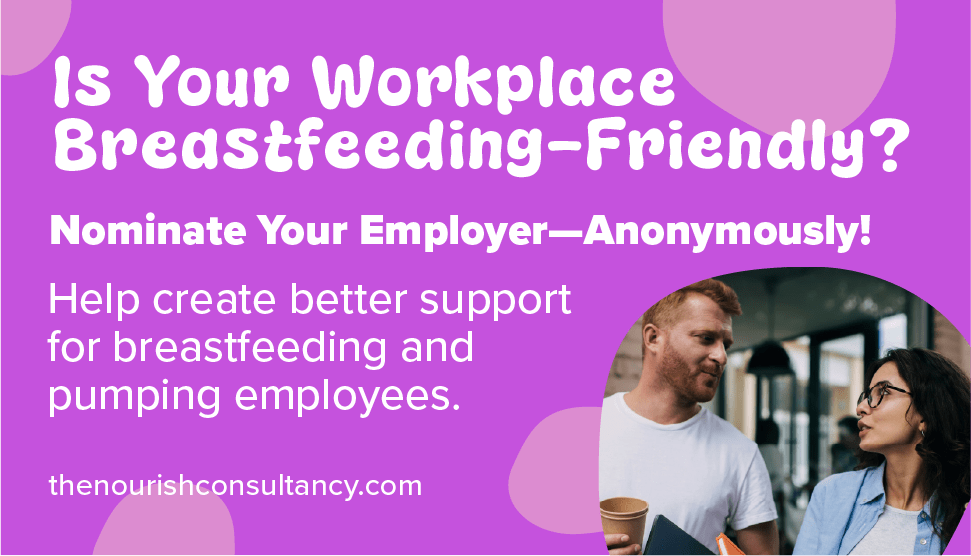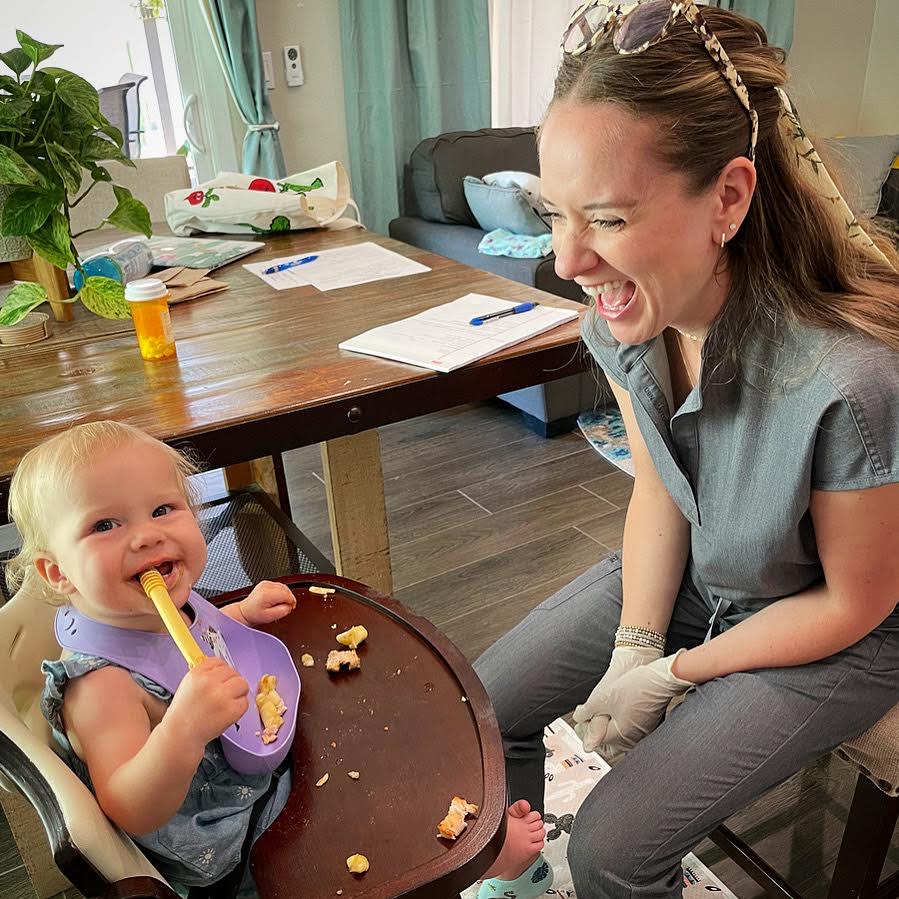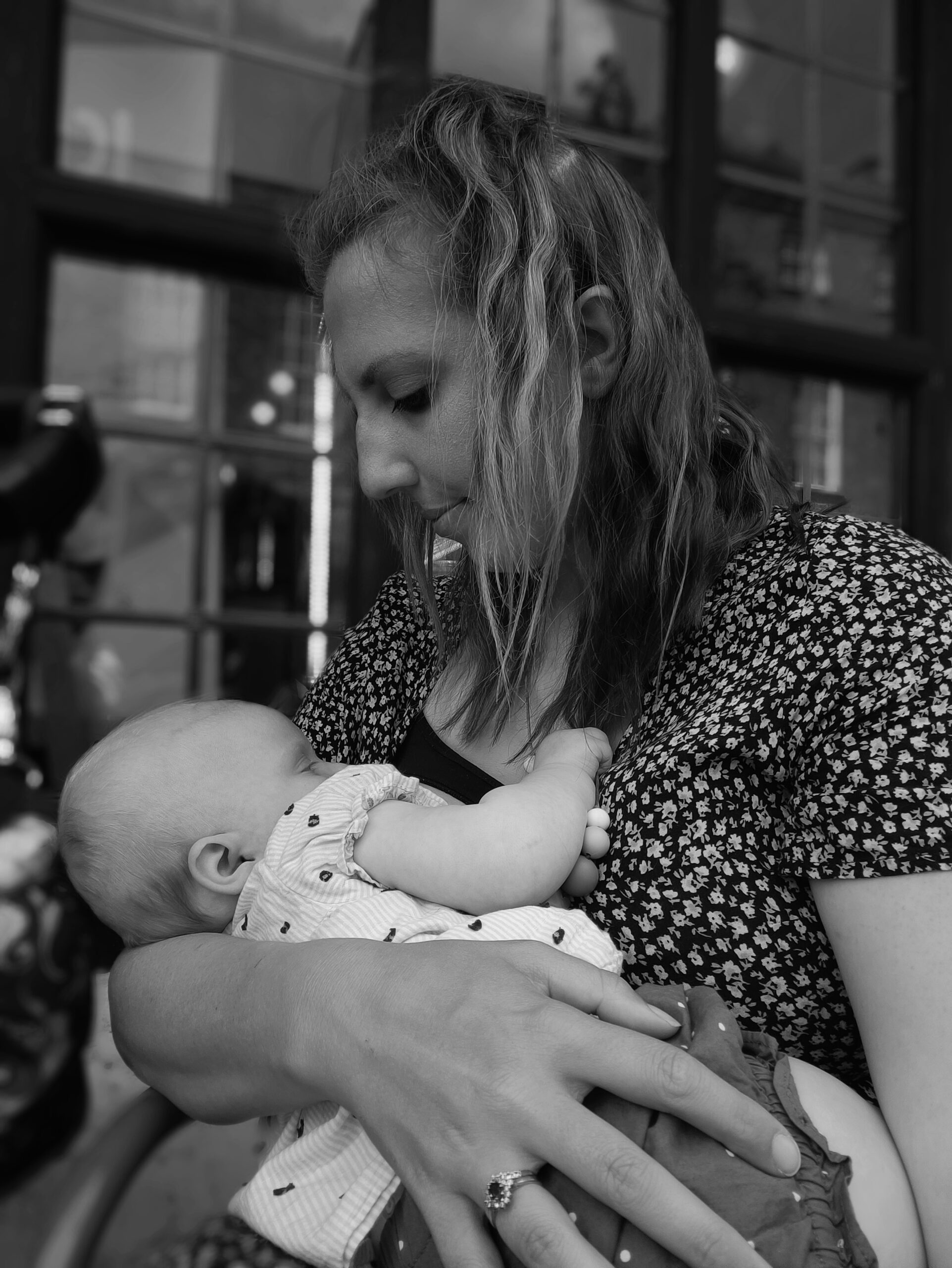When transitioning baby from milk to solid foods, it can sometimes be stressful for parents: knowing when to introduce, what to introduce, or how to introduce foods. There is no “right way” to transition to solid foods. Just like most early childhood development, babies are all different with what they need or what they prefer.
When to start transitioning baby to solid foods
Let’s first discuss what to look for when knowing if baby is ready to start solid foods. There are four major skills to look for before safely and successfully starting solids.
1. Baby can sit for at least 1 minute independently: this allows the esophagus to be elongated as much as possible when eating, which decreases the risk of choking.
2. Baby mouths items: this signifies that baby has practiced putting toys, teethers, and/or their hands in their mouth and has slowly worked to decrease their gag reflex. This also shows interest of oral exploration.
3. Baby shows interest when you eat: your baby may be watching your every move when you’re putting things in your mouth or grabbing towards your food.
4. Baby opens mouth when an item is presented to them: either a toy or even your food, baby will prepare by opening up their mouth to accept what they’re being given.
What foods do I introduce first?

There are so many foods that you can introduce to baby first. Some parents prefer baby-led weaning, while others prefer a more traditional approach such as feeding oatmeal or purees first and slowly increasing the textures. There are benefits to both approaches, so don’t feel the need to stick to one or the other. Many parents find that using a mix of both baby-led weaning and the traditional feeding sequence is best for their baby and their family.
Many parents find that using a mix of both baby-led weaning and the traditional feeding sequence is best for their baby and their family.
Benefits of baby-led weaning include baby learning and gaining independence while eating, learning where their gag reflex is and where to safely place food, and decreased meal prep since baby is eating similarly to the rest of the family. It’s often money-saving due to this fact as well!
A traditional feeding sequence is beneficial because baby oatmeal is often used first. In this case, it can be mixed with breast milk or formula, which is a familiar taste, so the only attribute that is changing for baby is the texture. This can be much less startling to some babies. Some parents also find that serving purees is easier than whole table food because they find it less stressful and easier to just buy various baby foods from packages or jars.
Ultimately, the decision is yours. Many babies will benefit from both approaches as it exposes them to various textures, flavors, and increases independence.
How to introduce solid foods
Before sitting a baby down in their high chair and feeding them food, they may have to get used to the whole idea of even sitting in a high chair. Sitting baby in the high chair while you eat and offering toys for a few days or weeks prior to introducing foods may help your baby get used to the idea of sitting there to eat. Baby also begins to develop a positive relationship with the high chair by spending quality time with you and playing with toys.
It’s also essential to do your best to sit your baby in a 90-90-90 position. This means that there is a 90 degree angle at their hips, knees, and ankles. Many high chairs do not allow for this positioning, but you also don’t need an expensive high chair to accommodate. Look for items around your house to prop behind them or under their feet to establish a good base. When baby is sitting in this proper position, they are less likely to choke on foods.
If offering whole table foods through the baby-led weaning approach, make sure to avoid common choking hazards such as hot dog, nuts, and raw vegetables. Make sure that food is easily mashed between your fingers and about the length/width of your pinky finger. Also avoid added salts and sugar as it is hard for baby to break those down in their body.
Many babies explore and demand more independence when they start solid foods. Even if utensils are presented to them, they will want to grab the utensils themselves. Load several spoons and place them on the tray for them to bring it to their mouth. This also decreases the frustration of them having to scoop the food independently.

Many babies explore and demand more independence when they start solid foods.
Other babies prefer to be fed. In this case, we want to look for the positive tilt. This is when the baby leans forward, opens their mouth willingly, signifying to you that they are ready for the food. If baby is turning away, tightening their lips, or pushing the spoon away, do not force them to eat what’s on the spoon. When baby gives a positive tilt, this is showing internal motivation, a positive relationship between baby and caregiver, that they like the food, and they are ready for the next bite. If food is forced on them when they are not ready, it may cause baby to develop negative feelings towards meals, food, and their high chair. Offering a loaded spoon from the side rather than directly in front of them may also be less alarming during mealtime.
Many purees are presented in pouches so that they are easy to throw in a diaper bag and eat on the go. When baby is eating at a high chair, it is important to present these purees on a spoon – ideally a textured spoon with a shallow bowl. A textured spoon allows baby to experience a bumpy or ridged texture when eating purees without the pressure to have to swallow that texture. This prepares them for the next grade of textures.
Another way to introduce textures with purees is through various teethers, plastic rings, or washable toys. If baby is hesitant to put the new utensil in their mouth, place teethers or toys that they are already used to putting in their mouth and dip it in purees. Similarly, you can add some of their utensils to their toys so they begin to practice mouthing their spoons throughout the day during play!
The importance of messy

Allowing baby to get messy is often a trickier concept for parents than it is for children. Allow the food on their face and hands and try not to wipe until the end of the meal. When baby plays with food in their hands and allows food on their face, this promotes development of sensory integration by exposing baby to food in all senses.
When baby plays with food in their hands and allows food on their face, this promotes development of sensory integration
Almost all babies hate food being wiped from their face. By waiting until the end of a meal, this allows baby to fully enjoy all aspects of their food in the meal without being interrupted with a face or hand wipe.
Gagging Vs Choking
A baby’s gag reflex is much further forward on their tongue than an adult’s gag reflex. This is decreased and desensitized when baby’s explore food and items in their mouth.
Although many people believe that babies will gag or choke less on purees, this is actually a myth. Babies will typically gag or choke about the same amount on purees as they do on whole table foods. Gagging implies that baby is experiencing a safety reflex to project a food out. You may see watery eyes or red around their eyes or nose. Baby will also make gurgly sounds when gagging. This does not warrant an emergency. In fact, gagging is a great way for your baby to learn about food independence. Choking implies it is an emergency, you typically won’t hear any wheezing or breathing, baby may turn blue, and the Heimlich manueuver is needed.
When baby gags, it is important to not alarm baby. If you become scared, baby will develop negative feelings towards gagging as well and be less likely to try new foods. Instead, calmly say something like “that bite was big,” “good gag,” or “You got it! Get it out.”
The importance of modeling

When baby is learning to chew and try new foods, this is the best time to chew with your mouth open! Throw all your manners out of the window! Show baby how to chew foods and repeat “chew chew chew.” If baby is hesitant to eat, see if they’ll feed you! Many babies enjoy feeding their parents, especially when mom or dad make it fun by emphasizing “mmm” and “yummy” when they eat it.
We all live busy lives, but make it a goal to sit down and eat at least one good meal a day with the family. Babies learn everything through observation and seeing it modeled, including how to eat. Turn off the screens (tvs, tablets, phones) and focus on your family!
Babies learn everything through observation and seeing it modeled, including how to eat.
Be patient
Some babies like to take their time when learning. If baby doesn’t seem to be picking up the concept of eating as quickly as you had hoped, he probably just needs more practice. Begin offering foods more throughout the day. Start at 1-2 times and if baby needs more, increase to 2-3 times per day.
Try not to stress too much when introducing foods. Up until one year, a baby’s main source of nutrition is still their milk. They probably won’t consume as much food as you may think. At the same time, babies will often surprise you when you least expect it. Enjoy your meals, model as much as possible, and decrease the pressure on baby and yourself. Focus on discussing your days and having fun with food. Babies will get there with practice, modeling, and a positive attitude. If you still experience struggles with meals by the time baby is 12 months, seek out professional help from a feeding therapist.
Boobingit earns a commission from items purchased from the booingit storefront on Amazon. Thank you for supporting us.


















